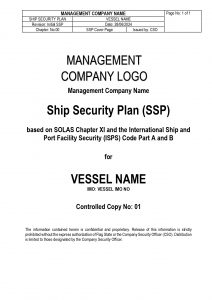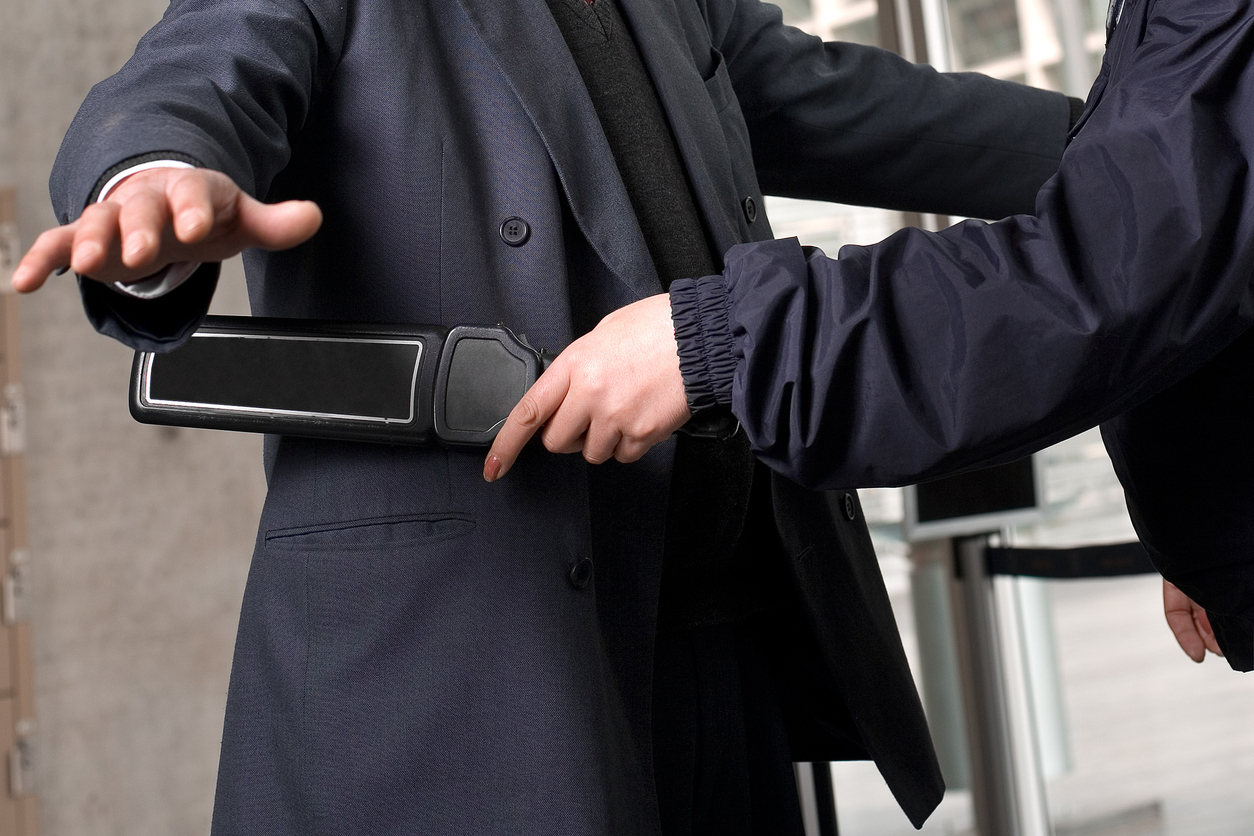What is a Ship Security Officer (SSO)?
The International Ship and Port Facility Security Code (ISPS) code introduced the role of a Ship Security Officer role (SSO) on a ship. The company and the vessel master select a qualified officer to assume the role of an SSO. In this article, we shall explore the duties of an SSO and how it ensures the security of a ship from internal and external threats.

Who is the Ship Security Officer?
The Ship Security Officer (SSO) is a designated officer onboard a ship tasked with ensuring the security of a ship. The prerequisite to be a designated Ship Security Officer is a minimum of 12 months of sailing experience and a Ship Security Officer Course certificate from a recognized maritime training institute.
The SSO may sometimes be known as the Vessel Security Officer (VSO). Typically, the role of Ship Security Officer is handled by the Chief Engineer or Chief Officer of the ship.
What is the Ship Security Plan (SSP)?
The Ship Security Plan (SSP) is a comprehensive ship-specific document that contains important security-related information for a ship such as measures to be taken at different security levels, contingency procedures, threat levels, and security equipment.
The management company creates the SSP from scratch. For this purpose, the Company Security Officer (CSO) visits the ships before or during the takeover for an initial Ship Security Assessment (SSA). During this assessment, the CSO records security information such as ship layout, security equipment, security loopholes, and other related data to build the ship’s SSP.

Once the plan is ready, it is sent to the flag state for approval which can take anywhere from 15 days to 2 months. Once approved, the SSP copies are placed onboard the ship and the management company office. The SSP serves as the reference document for all matters related to ship security.
Duties of a Ship Security Officer
The ISPS Code defines the role and duties of a Ship Security Officer (SSO). It defines ten duties for an SSO. However, this is not an exhaustive list. The ten duties of a Ship Security Officer are:
-
Regular inspections
-
Implementation of the Ship Security Plan (SSP)
-
Coordinating the security aspects during ship operations
-
Suggesting modifications to the SSP
-
Reporting non-conformities and deficiencies to the Company Security Officer (CSO)
-
Improving security awareness onboard
-
Ship crew training
-
Reporting of security incidents
-
Coordination with CSO and Port Facility Security Officer (PFSO)
-
Maintenance of security equipment
Let’s expand each of these duties briefly for clarity.
Regular security inspections
The Ship Security Officer must conduct regular inspections and verify all pertinent ISPS security equipment, procedures, and human interactions are satisfactory. Any deficiency must be corrected and brought to the notice of the Master and the CSO to prevent recurrence.
Implementation of the Ship Security Plan (SSP)
The Company Security Officer prepares the ship security plan that contains all the procedures to be followed on a ship in the case of emergencies and threats. It is the job of the ship security officer onboard to ensure that the ship security plan is complied with at all security levels.
Coordinating the security aspects during ship operations
The SSO supervises the security aspects during ship operations such as cargo handling and ship stores management. The SSO is overall in charge and works with ship crew and port facility security officers for secure operations.
Suggesting modifications to the SSP
The SSO also reviews the SSP. Depending on the route and trading specifics, a ship’s SSP may need modifications. For instance, if a vessel regularly trades in high-risk areas, the ship may require specific security equipment for robust security.
The SSO periodically evaluates the SSP to ensure it contains all the procedures and information for the most optimal security.
Reporting non-conformities and deficiencies
Inspections happen regularly on a ship. Some examples are flag state inspections, class inspections, vetting inspections, and internal audits. The observations raised during these inspections may be related to ship security.

The SSO must promptly notify the Company Security Officer (CSO) and other stakeholders of these non-conformities and deficiencies for effective rectification. Depending on the nature of the observation, changes may sometimes be required to the SSP.
Improving security awareness onboard
The SSO must continuously strive to increase the level of security awareness among the crew members. All crew must be regularly monitored during duties to ensure they are highly aware and vigilant concerning any security issues.
This includes, among other things, familiarising the crew members with the three security levels and the allowed and restricted areas for each level.
Ship Crew Training
In addition to verbal training, frequent security drills must be carried out to improve emergency preparedness. Security drills such as bomb searches, stowaway searches, and pirate attacks can train the ship crew practically for enhanced performance during emergencies.
Assist with Ship Security Assessment
The Ship Security Assessment (SSA) is a periodic security review carried out by the company to ensure compliance. The objectives of a comprehensive SSA include identifying security measures, threats, and any weaknesses within the system.
The Company Security Officer (CSO) may perform the SSA himself or engage someone else to do it on his behalf. The role of the SSO is to assist the person carrying out the Ship Security Assessment (SSA). He is the most appropriate person to do so as he intimately understands the ship’s security.
Maintenance of ship security equipment
The ship has security items onboard such as high-beam flashlights, batons, metal detectors, visitor ID cards, visitor log books, visitor badges, seals, barrier tapes, whistles, and night vision binoculars. All of these items need to be checked, operated, tested, calibrated, and maintained periodically.
It is the job of the SSO to ensure that the security equipment is in the most optimal condition at all times.
Examples of Security Measures in ISPS
Some measures that a ship may employ during normal as well as high-threat periods are as follows:
-
Locking of restricted spaces to prevent unauthorized access
-
Bag checks at the entry points to ensure no unauthorized or illegal items arrive on the ship
-
Stowaway checks
-
ID checks of all personnel that board vessels
-
Monitoring of deck areas, mooring ropes, steering gear room, and other vulnerable areas for any suspicious persons or items

Security check
Ship Security Officer Course
The Ship Security Officer course is offered by maritime training institutes globally. These courses prepare officers to undertake the role of a Ship Security Officer on the ship. The course duration may differ from institute to institute. In India, the minimum advised by the Flag State is two days. However, some institutes complete the courses in three days or more.
Upon completion of the course, the officers receive the ship security officer certificate. The official course certificate is mandatory to serve as an SSO onboard ships.
Frequently Asked Questions
What is the difference between SSO and CSO?
The SSO stays onboard the ship whereas the CSO works from the office. An SSO is only responsible for his ship’s security whereas a CSO supervises the security of multiple ships.
Who is the ship security officer on board?
Typically, the Chief Engineer or the Chief Officer serves as the Ship Security Officer onboard.
What is the Port Facility Security Officer (PFSO)?
The Port Facility Security Officer (PFSO) is a port’s version of an SSO role. The PFSO has similar duties and responsibilities at a port that an SSO has on a ship.

Leave a Reply